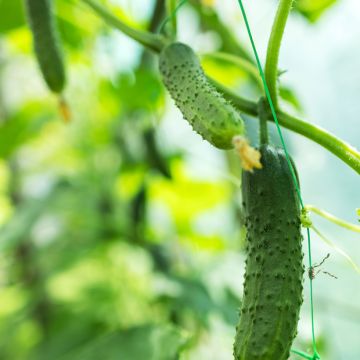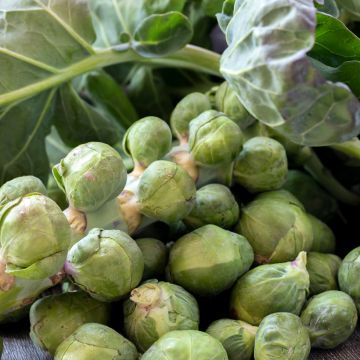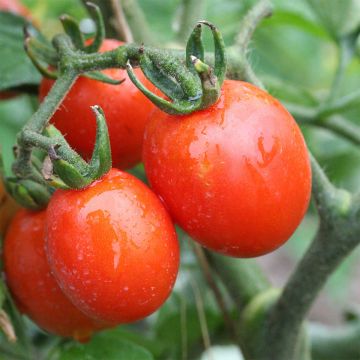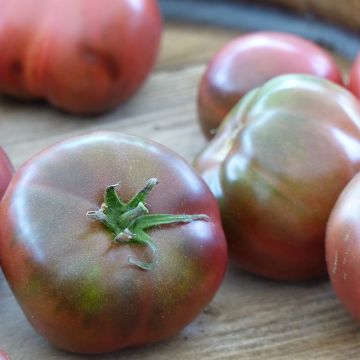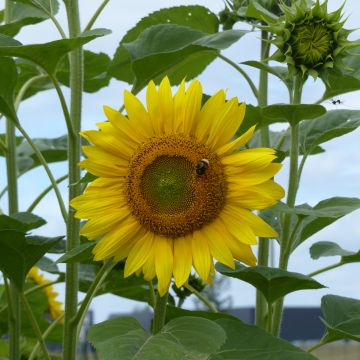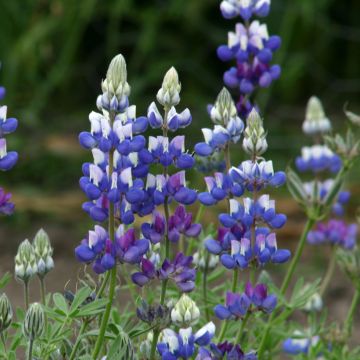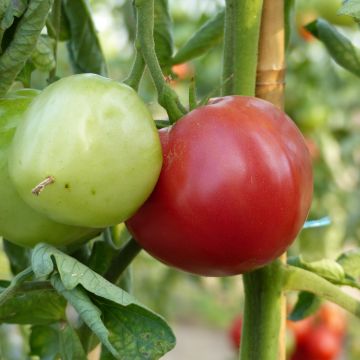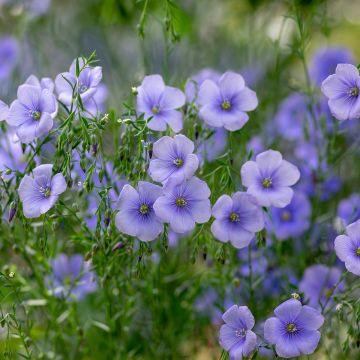Shipping country and language
Your country of residence may be:
Your country of residence is:
For a better user experience on our website, you can select:
Your shipping country:
-
Andorra
-
Austria
-
Belgium
-
Bulgaria
-
Canada
-
Chile
-
Croatia
-
Cyprus
-
Czechia
-
Denmark
-
Estonia
-
Finland
-
France
-
Germany
-
Greece
-
Hungary
-
Iceland
-
Ireland
-
Italy
-
Latvia
-
Lithuania
-
Luxembourg
-
Malta
-
Monaco
-
Netherlands
-
Poland
-
Portugal
-
Romania
-
Slovakia
-
Slovenia
-
Spain
-
Sweden
-
Switzerland
-
United Kingdom
We only deliver seed and bulb products to your country. If you add other products to your basket, they cannot be shipped.
Language:
-
French
-
German
-
Spanish
-
English
-
Italian
My Account
Hello
My wish lists
Log in / Register
Existing customer?
New customer?
Create an account to track your orders, access our customer service and, if you wish, make the most of our upcoming offers.


Mertensia maritima


Mertensia maritima


Mertensia maritima
Mertensia maritima
Mertensia maritima
Oysterleaf, Sea Lungwort, Oysterplant
Order in the next for dispatch today!
Dispatch by letter from €3.90.
Delivery charge from €5.90 Oversize package delivery charge from €6.90.
More information
This item is not available in your country.
Schedule delivery date,
and select date in basket
This plant carries a 6 months recovery warranty
More information
We guarantee the quality of our plants for a full growing cycle, and will replace at our expense any plant that fails to recover under normal climatic and planting conditions.
Seed-only orders are dispatched by sealed envelope. The delivery charge for seed-only orders is €3.90.
Description
Mertensia maritima, also known as the oyster plant due to the iodized taste of its slightly bluish leaves, is a perennial and creeping herbaceous plant that reaches a height of 15cm (6in) and a width of 50cm (20in). Quite demanding, it can be grown in open ground or in a pot. Sow in February or March for a harvest from April to September according to your desires.
Mertensia maritima belongs to the Boraginaceae family, just like Borage, but it has a stronger iodized taste than the latter. Present throughout the northern hemisphere in dune ridges, this species is now protected. The plant has thick blue-green foliage with a matte texture and produces pendulous bell-shaped flowers in a deep blue-violet colour during the summer. Highly decorative, it can be planted both in ornamental gardens and vegetable gardens. This perennial and very resistant plant remains in place for several years and has deciduous foliage, which disappears in winter. It requires well-drained soil and can also be grown in pots.
In cooking, the fleshy leaves, with their oyster taste, can be consumed raw, adding a touch of originality and an interesting texture to fish dishes or salads.
Harvest: It is done as needed.
Storage: Freshly picked leaves can be stored in the refrigerator for a few days. They can also be preserved in vinegar brine, like samphire.
Gardener's tip: If your plants are being eaten by snails and slugs, place ash or coffee grounds nearby, to be renewed in case of rain.
Note: Delicate plant to cultivate, slow growth, reserved for experienced gardeners. Germination is often slow and capricious. However, once successful, the plant lives for many years in the garden.
Report an error about the product description
Mertensia maritima in pictures


Harvest
Plant habit
Foliage
Botanical data
Mertensia
maritima
Boraginaceae
Oysterleaf, Sea Lungwort, Oysterplant
Central Europe
Perennial
Other Vegetable seeds from A to Z
Planting and care
Sowing Mertensia maritima can be delicate and does not tolerate excessive moisture. It is therefore preferable to cultivate it in a pot to better control drainage and humidity, especially in rainy regions.
First, place the seeds in the refrigerator for 4 to 6 weeks before sowing them.
Indoor sowing: Prepare a well-draining mixture of compost and sand. Sow the seeds at a warm temperature (between 15 and 20°C (59 and 68°F)), lightly covering them. Keep the soil moist, but not excessively wet, and protect it from direct sunlight until germination. This can take some time and be irregular (around 20 days). Once the young plants are well-developed, repot them in pots containing a mixture of half compost and half sand, with a well-draining layer at the bottom of the pot.
Planting: You can then plant Mertensia maritima in a mixture of equal parts sand and garden soil, either in a pot or directly in the ground in partial shade. Ensure that the soil remains moist, but not waterlogged. Leave 60cm (24in) between each plant. Harvest the leaves as needed.
Seedlings
Care
Intended location
This item has not been reviewed yet - be the first to leave a review about it.
Vegetable seeds
Haven't found what you were looking for?
Hardiness is the lowest winter temperature a plant can endure without suffering serious damage or even dying. However, hardiness is affected by location (a sheltered area, such as a patio), protection (winter cover) and soil type (hardiness is improved by well-drained soil).

Photo Sharing Terms & Conditions
In order to encourage gardeners to interact and share their experiences, Promesse de fleurs offers various media enabling content to be uploaded onto its Site - in particular via the ‘Photo sharing’ module.
The User agrees to refrain from:
- Posting any content that is illegal, prejudicial, insulting, racist, inciteful to hatred, revisionist, contrary to public decency, that infringes on privacy or on the privacy rights of third parties, in particular the publicity rights of persons and goods, intellectual property rights, or the right to privacy.
- Submitting content on behalf of a third party;
- Impersonate the identity of a third party and/or publish any personal information about a third party;
In general, the User undertakes to refrain from any unethical behaviour.
All Content (in particular text, comments, files, images, photos, videos, creative works, etc.), which may be subject to property or intellectual property rights, image or other private rights, shall remain the property of the User, subject to the limited rights granted by the terms of the licence granted by Promesse de fleurs as stated below. Users are at liberty to publish or not to publish such Content on the Site, notably via the ‘Photo Sharing’ facility, and accept that this Content shall be made public and freely accessible, notably on the Internet.
Users further acknowledge, undertake to have ,and guarantee that they hold all necessary rights and permissions to publish such material on the Site, in particular with regard to the legislation in force pertaining to any privacy, property, intellectual property, image, or contractual rights, or rights of any other nature. By publishing such Content on the Site, Users acknowledge accepting full liability as publishers of the Content within the meaning of the law, and grant Promesse de fleurs, free of charge, an inclusive, worldwide licence for the said Content for the entire duration of its publication, including all reproduction, representation, up/downloading, displaying, performing, transmission, and storage rights.
Users also grant permission for their name to be linked to the Content and accept that this link may not always be made available.
By engaging in posting material, Users consent to their Content becoming automatically accessible on the Internet, in particular on other sites and/or blogs and/or web pages of the Promesse de fleurs site, including in particular social pages and the Promesse de fleurs catalogue.
Users may secure the removal of entrusted content free of charge by issuing a simple request via our contact form.
The flowering period indicated on our website applies to countries and regions located in USDA zone 8 (France, the United Kingdom, Ireland, the Netherlands, etc.)
It will vary according to where you live:
- In zones 9 to 10 (Italy, Spain, Greece, etc.), flowering will occur about 2 to 4 weeks earlier.
- In zones 6 to 7 (Germany, Poland, Slovenia, and lower mountainous regions), flowering will be delayed by 2 to 3 weeks.
- In zone 5 (Central Europe, Scandinavia), blooming will be delayed by 3 to 5 weeks.
In temperate climates, pruning of spring-flowering shrubs (forsythia, spireas, etc.) should be done just after flowering.
Pruning of summer-flowering shrubs (Indian Lilac, Perovskia, etc.) can be done in winter or spring.
In cold regions as well as with frost-sensitive plants, avoid pruning too early when severe frosts may still occur.
The planting period indicated on our website applies to countries and regions located in USDA zone 8 (France, United Kingdom, Ireland, Netherlands).
It will vary according to where you live:
- In Mediterranean zones (Marseille, Madrid, Milan, etc.), autumn and winter are the best planting periods.
- In continental zones (Strasbourg, Munich, Vienna, etc.), delay planting by 2 to 3 weeks in spring and bring it forward by 2 to 4 weeks in autumn.
- In mountainous regions (the Alps, Pyrenees, Carpathians, etc.), it is best to plant in late spring (May-June) or late summer (August-September).
The harvesting period indicated on our website applies to countries and regions in USDA zone 8 (France, England, Ireland, the Netherlands).
In colder areas (Scandinavia, Poland, Austria...) fruit and vegetable harvests are likely to be delayed by 3-4 weeks.
In warmer areas (Italy, Spain, Greece, etc.), harvesting will probably take place earlier, depending on weather conditions.
The sowing periods indicated on our website apply to countries and regions within USDA Zone 8 (France, UK, Ireland, Netherlands).
In colder areas (Scandinavia, Poland, Austria...), delay any outdoor sowing by 3-4 weeks, or sow under glass.
In warmer climes (Italy, Spain, Greece, etc.), bring outdoor sowing forward by a few weeks.
